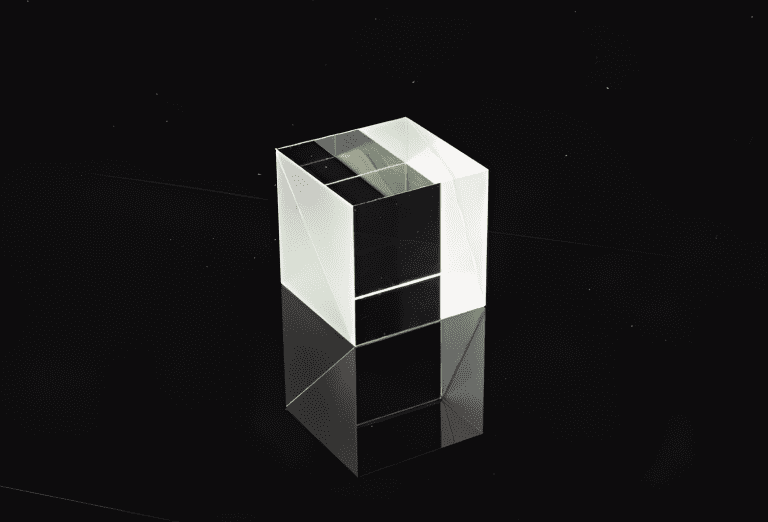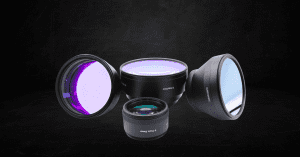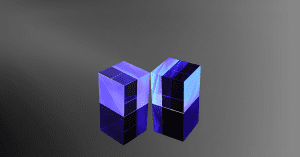Key Takeaways:
- Beamsplitters divide light into transmitted and reflected components. This is vital in diverse fields from scientific research to consumer electronics.
- They operate with coherent or incoherent light, splitting by intensity, wavelength, or polarization. Considerations when selecting include R/T ratio, wavelength range, and polarization needs.
- Plate beamsplitters are flat with coatings, while cube beamsplitters use prisms. Factors like application, light source, and packaging guide selection. Suppliers offer varied types, including custom options.
- Beamsplitters play pivotal roles in optical setups, ensuring precise light manipulation for an array of applications. To select a beamsplitter suitable for your needs, it is mandatory to understand its features correctly.
How to Select a Beamsplitter
Beamsplitters are essential in various optical applications, from scientific research to everyday consumer electronics. Here’s a summary of the key information:
What is a Beamsplitter?
A beamsplitter is an optical device that divides an incident beam of light into two parts: one part is transmitted through the splitter, while the other is reflected. This division occurs by positioning the splitter or reflecting surface at an angle relative to the incident light, redirecting the reflected light away from the source. Learn More.
Beamsplitting on Coherent and Incoherent Light:
Beamsplitting can be applied to both coherent (e.g., laser) and incoherent (normal) light. Additionally, beamsplitters can function bidirectionally, combining two beams from different directions into a single output beam.
Ways of Beamsplitting:
- By Intensity:
- Achieved by applying a thin dielectric (metallic) coating to the surface of a transparent material, typically glass.
- The thickness of the coating determines the proportions of light reflected and transmitted, expressed as the reflection-to-transmission (R/T) ratio.
- Common R/T ratios include 50:50, but other applications may require ratios like 30:70 or 40:60.
- By Wavelength:
- Utilizes a dichroic mirror, which operates based on the principle of reflecting or transmitting light depending on its wavelength.
- Dichroic mirrors can be hot mirrors or cold mirrors, with thresholds in the infrared (IR) spectrum.
- Hot mirrors divert IR away from a sensor, while cold mirrors reflect the visible portion.
- By Polarization:
- Achieved by using a beamsplitter to separate unpolarized light into two different polarizations: S-polarized (reflected) and P-polarized (transmitted).
- Non-polarizing beamsplitters maintain the original polarization of light.
- Achieved by using a beamsplitter to separate unpolarized light into two different polarizations: S-polarized (reflected) and P-polarized (transmitted).
Considerations when Selecting Beamsplitters
- Functionality and Form Factors: Different types of beamsplitters have varying functionalities and forms, necessitating careful consideration during selection.
- R/T Ratio: Depending on the application, choose the appropriate reflection-to-transmission ratio.
- Wavelength Range: Consider the wavelength range of the application and select the beamsplitter accordingly.
- Polarization Requirements: Determine whether polarization preservation or separation is needed.
Form Factors of Beamsplitters
1. Plate Beamsplitter:
- Shape: Flat piece of optical mirror with a coating on the front face.
- Mounting: Usually mounted at 45⁰ to the incident beam.
- Limitations:
- Refraction through the optical medium leads to a slight offset in the transmitted portion.
- The second surface produces a faint “ghost” reflection.
2. Cube Beamsplitter:
- Composition: Two right-angled prisms bonded on their hypotenuse surfaces.
- Operation: Reflects a portion of incident light at 90⁰ while transmitting the balance straight through.
- Requirements: Requires incident light perpendicular to the first surface.
- Advantages: Does not impose an offset on the transmitted light.
3. Polarization beamsplitters:
- Composition: Typically use dielectric film coating, which is commonly found in cemented cubes. While flat plates are an option, their bandwidth is narrower and more suitable for single-band applications.
- To achieve a broad-band polarization beamsplitter, a cemented cube format is generally recommended, and the choice of substrate material is crucial for different bandwidth implementations.
4.Non-polarizing beamsplitters:
- Composition: Achievable through dielectric film coating or a combination of dielectric film and metal.
- Operation: Pure dielectric film non-polarizing beamsplitters have a narrow bandwidth, suitable for single-band applications, but the control of the difference between P-polarized and S-polarized light is more manageable, resulting in a better non-polarizing effect.
- Requirements: Broadband non-polarizing beamsplitters are typically realized through a combination of dielectric film and metal. The drawback is that there is usually a certain difference between P-polarized and S-polarized light (related to bandwidth), and due to metal absorption, there will be some energy loss across the entire spectrum, making it less suitable for the ultraviolet band.
4.Dichroic mirrors
- Composition: Dichroic mirrors are typically produced on flat plates. When produced on cemented cubes, they have a broader transition band but are not suitable for applications requiring high steepness.
5.Other Types:
- Transmission Grating and Polka Dot:
- Similar in form factor to plate beamsplitters.

Applications of Beamsplitters
- Interferometry:
- Description: A beam is split into two, with one part reflected off a surface, and interference patterns are measured to determine distance.
- Example: Michelson interferometer relies on a beamsplitter to produce interference patterns.
- R&D Application: Used extensively in quantum optics.
- Fluorescence Spectroscopy:
- Function: Uses a dichroic beamsplitter to filter by wavelength, sending only emitted fluorescence to a detector.
- Camera-Based Imaging Systems:
- Usage: Plate-type beamsplitters often used to achieve coaxial illumination.
- Other Application: Dichroic filters can split light by wavelength between several sensors.
- Protection from Thermal Radiation:
- Example: Cold mirrors to protect sensors from potentially damaging thermal radiation.
- Lighting Systems:
- Purpose: Dichroic filters used to reduce the red content in white light, providing more blue illumination.
How to Select a Beamsplitter
- Application:
- Determine if the goal is to divide/combine a single beam or filter by wavelength.
- Consider the steepness of the transition in dichroic filters.
- Light Source:
- Consider the type of light source.
- For high-power lasers, plate beamsplitters may be preferable due to less internal heat.
- Packaging:
- Consider space constraints in the device.
- Cube beamsplitters may be preferred in applications with limited space.
Avantier offers a range of beamsplitters, including plate, dichroic (hot and cold mirrors), and transmission grating types. Custom beamsplitters designed to exact specifications are also available for niche applications. Contact us to discuss your specific requirements.
GREAT ARTICLE!
Share this article to gain insights from your connections!







